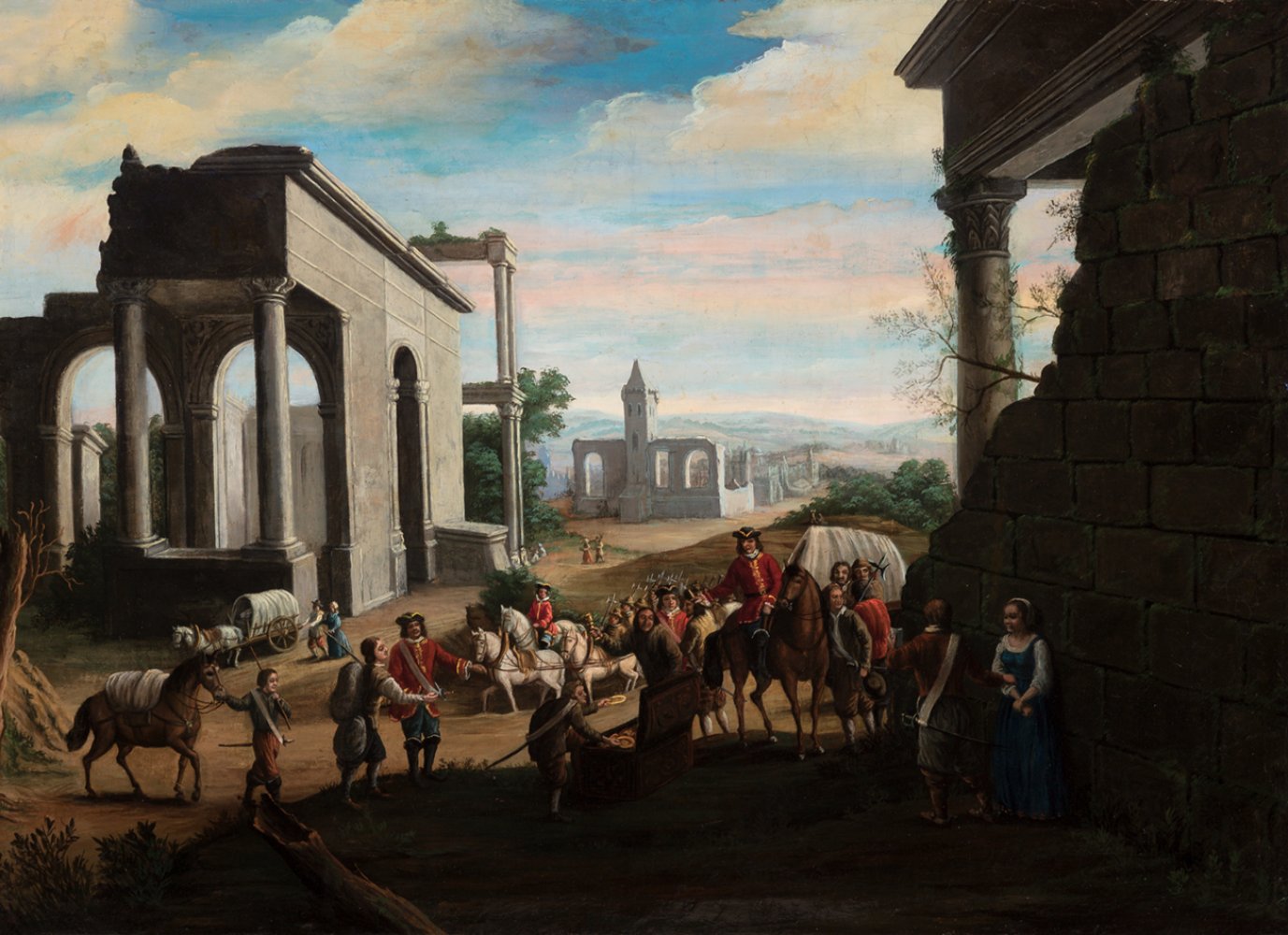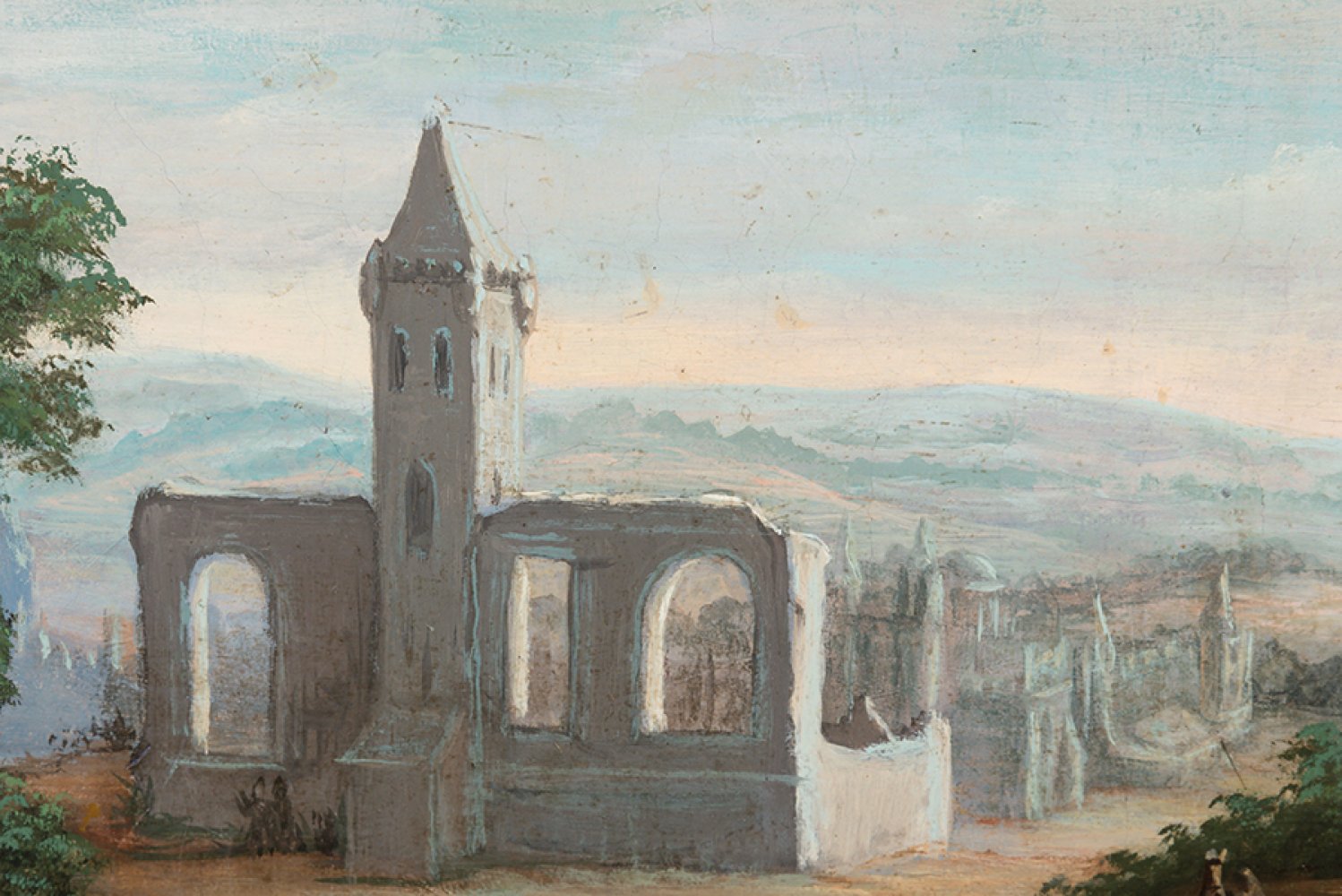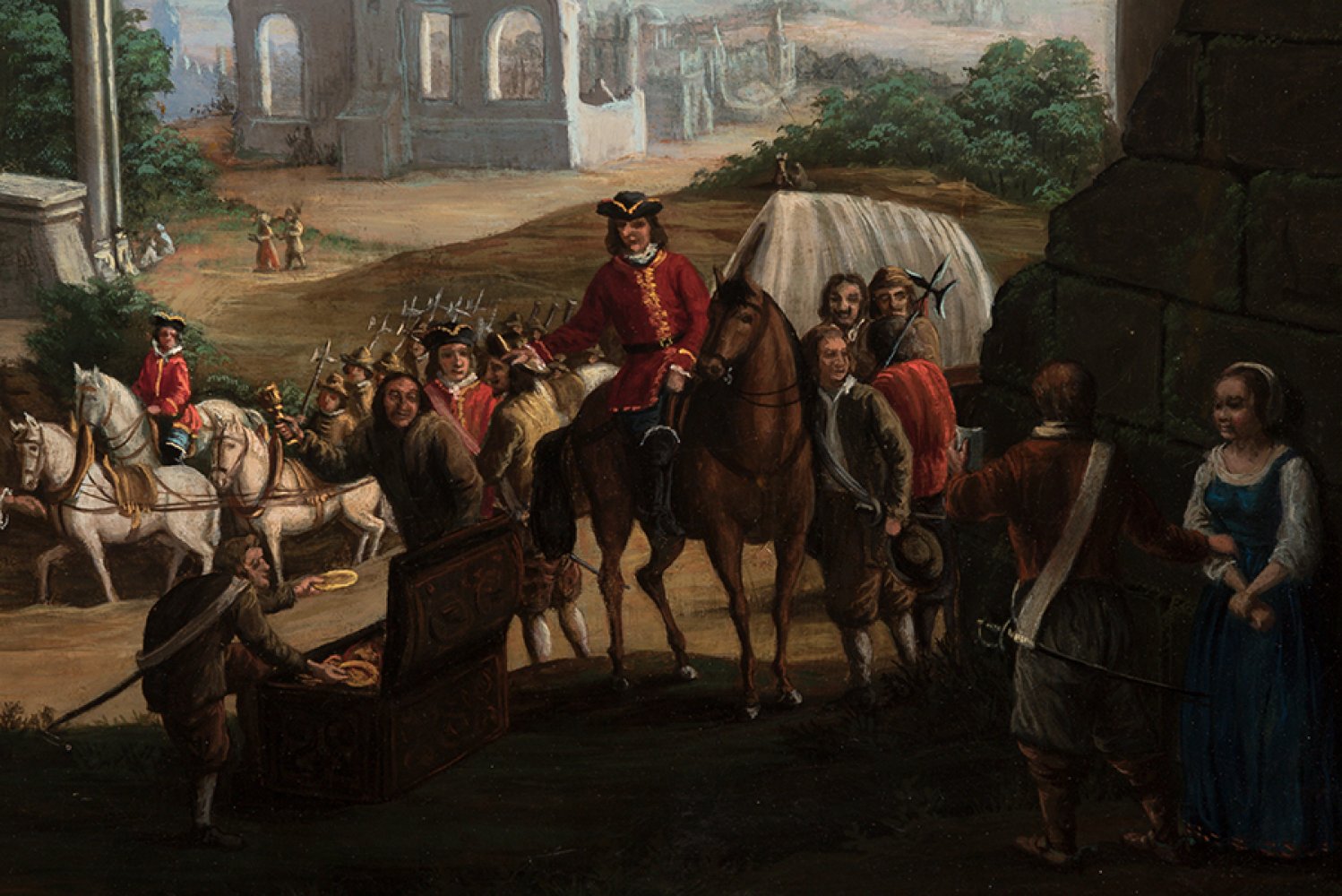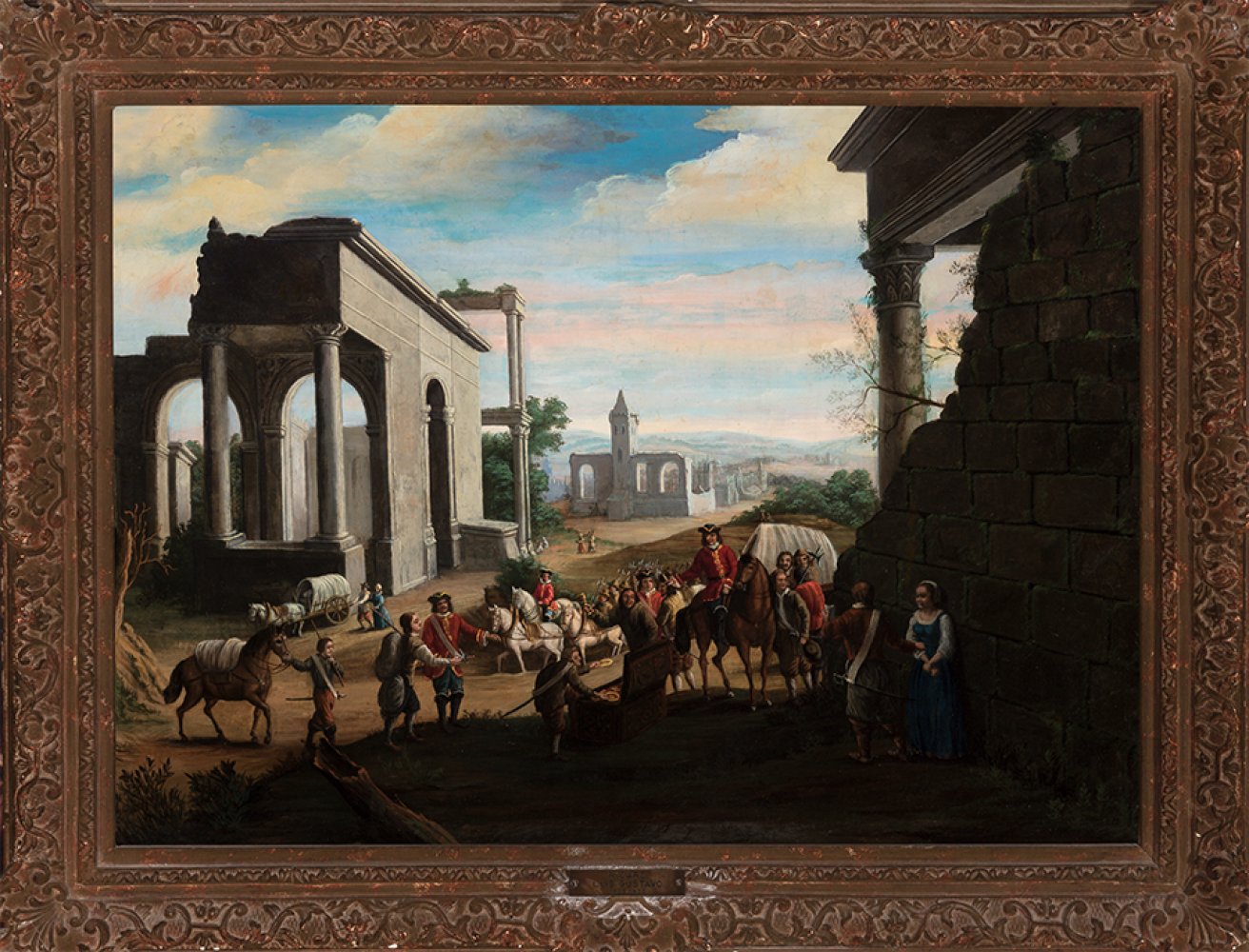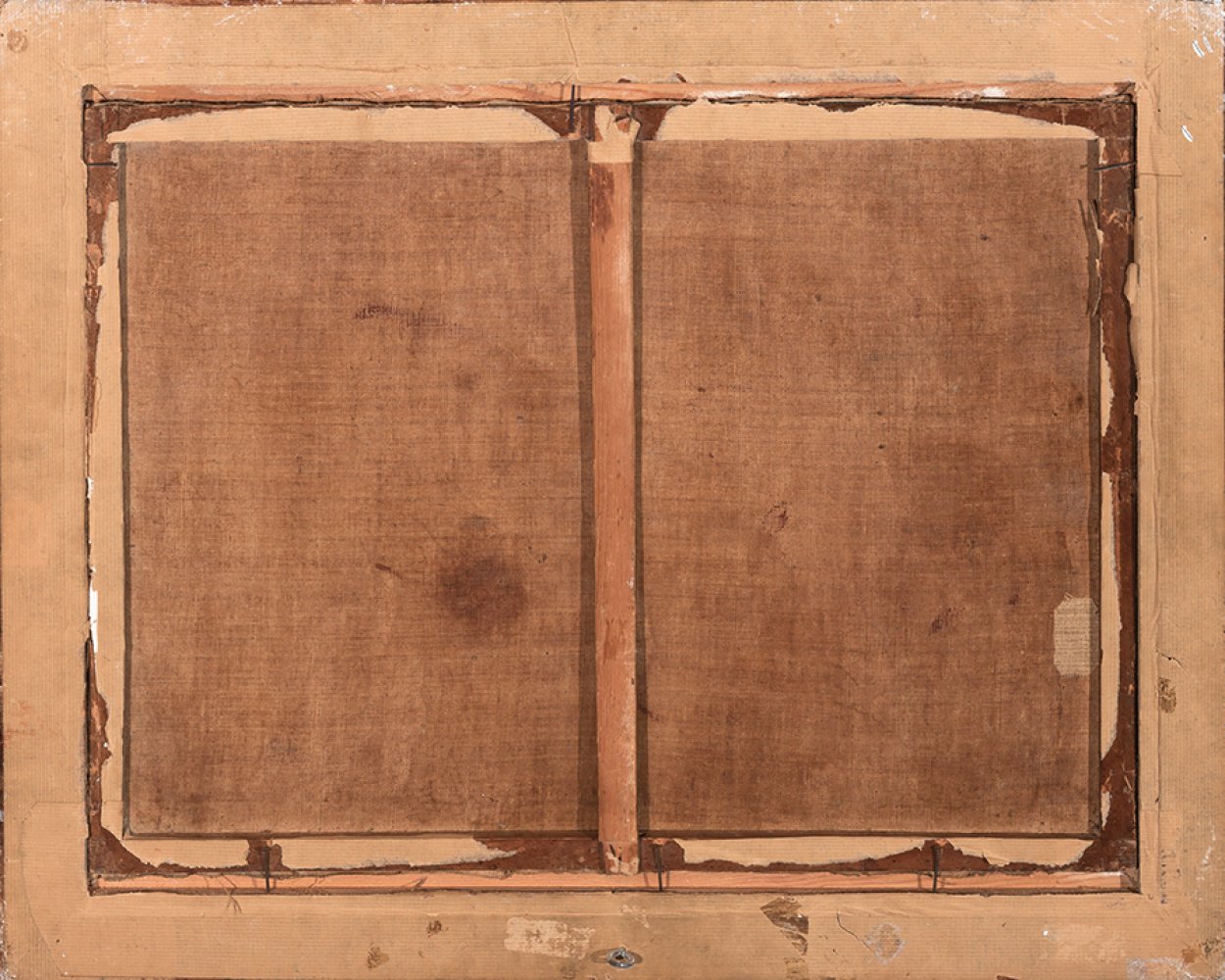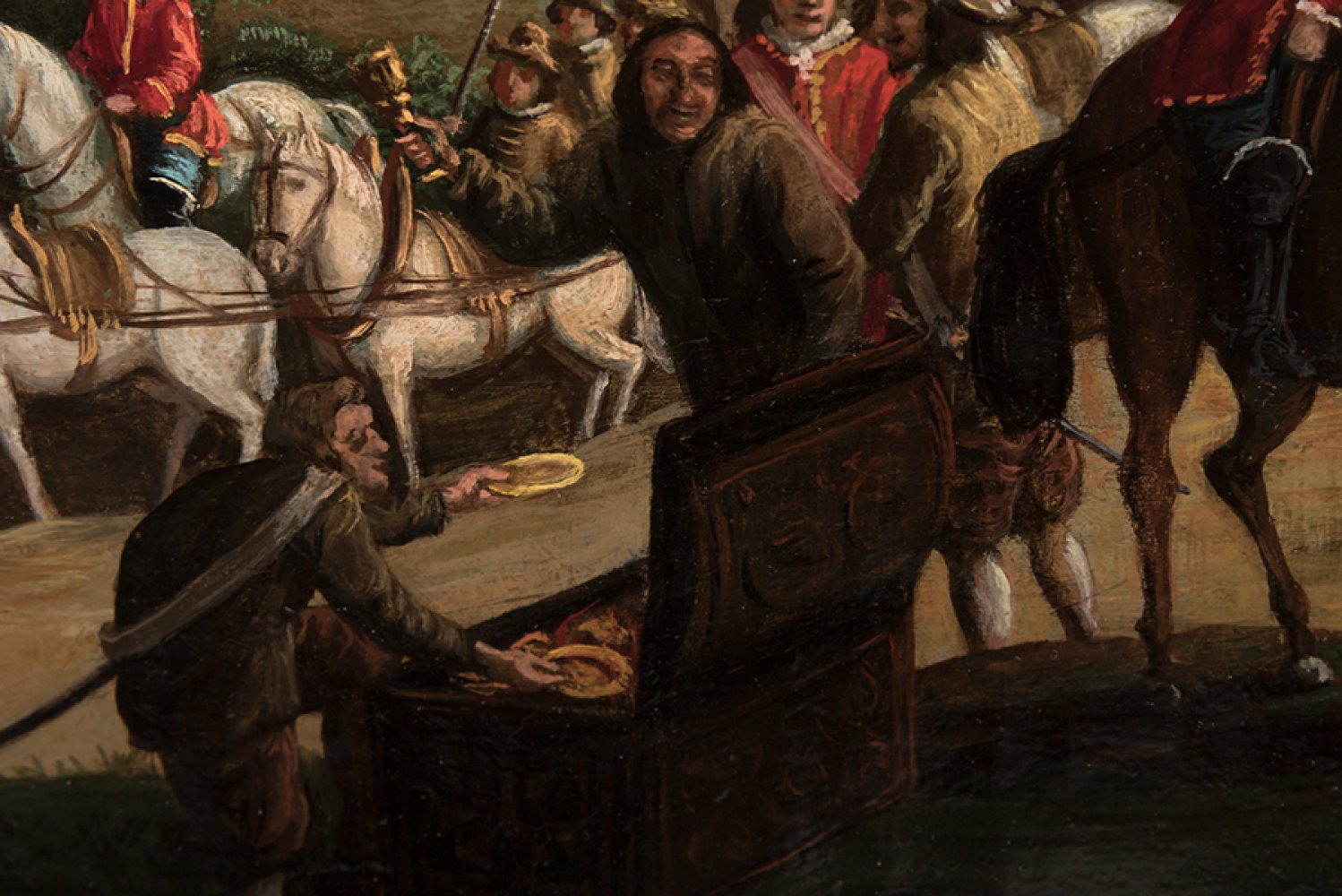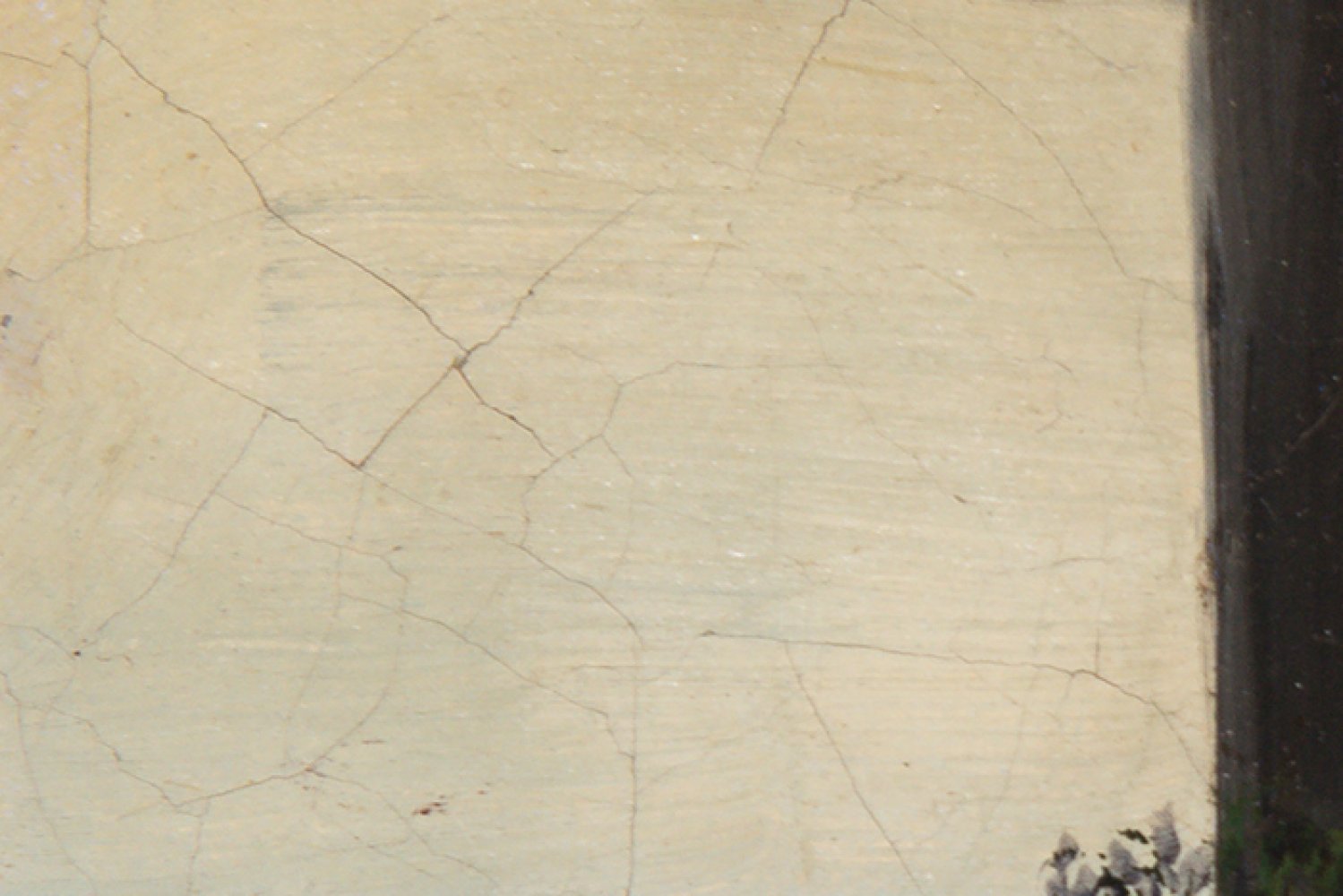39
French School; 19th century."The booty".Oil on canvas.Size: 45 x 62 cm; 57 x 73 cm (frame).In this
1/7
Description
French School; 19th century.
"The booty".
Oil on canvas.
Size: 45 x 62 cm; 57 x 73 cm (frame).
In this work the painter uses a precise, loose but short brushstroke, which defines the shapes and the qualities of figures and objects, without playing down the importance of the drawing. This turning to the past is due to the strength of Romanticism at the end of the 18th century, which sought to escape from the present by fleeing through time and space. An example of this is the present canvas, in which a multitude of figures are depicted in a large, idealised landscape. The treatment of colour is very notable in the harmony of the golds with coppery tones, the greys and the blue of the sky. The still-life work of the street vendors' belongings, whose tactile qualities are accurately reflected, is particularly noteworthy.
The work can be classified as part of the costumbrismo aesthetic trend. Traditionally, 19th- and 20th-century painting and literature have been interested in popular customs and types. Sorrolla himself commented: "I want to give, always within the verism of my school, a representation of Spain; not looking for philosophies, but for the picturesque of each region". This trend spread throughout Europe, where the tourism caused by the grand tour had awakened a demand for characteristic and picturesque images of each country. Thus, the local painters developed popular themes treated with an idyllic perspective in which the peasants were often depicted in scenes of an appetising and pleasurable nature. For this reason, this type of work was very common and appreciated in art from the 19th century until well into the 20th century. In which the creation of popular patterns portrayed through an idyllic vision where the author is influenced by an aesthetic and romantic heritage, developed during the second half of the 19th century and which derived in a localist conception of the landscape, in works that reflected the love for one's own land and the beauty and lyricism of the everyday, the close, the familiar.
"The booty".
Oil on canvas.
Size: 45 x 62 cm; 57 x 73 cm (frame).
In this work the painter uses a precise, loose but short brushstroke, which defines the shapes and the qualities of figures and objects, without playing down the importance of the drawing. This turning to the past is due to the strength of Romanticism at the end of the 18th century, which sought to escape from the present by fleeing through time and space. An example of this is the present canvas, in which a multitude of figures are depicted in a large, idealised landscape. The treatment of colour is very notable in the harmony of the golds with coppery tones, the greys and the blue of the sky. The still-life work of the street vendors' belongings, whose tactile qualities are accurately reflected, is particularly noteworthy.
The work can be classified as part of the costumbrismo aesthetic trend. Traditionally, 19th- and 20th-century painting and literature have been interested in popular customs and types. Sorrolla himself commented: "I want to give, always within the verism of my school, a representation of Spain; not looking for philosophies, but for the picturesque of each region". This trend spread throughout Europe, where the tourism caused by the grand tour had awakened a demand for characteristic and picturesque images of each country. Thus, the local painters developed popular themes treated with an idyllic perspective in which the peasants were often depicted in scenes of an appetising and pleasurable nature. For this reason, this type of work was very common and appreciated in art from the 19th century until well into the 20th century. In which the creation of popular patterns portrayed through an idyllic vision where the author is influenced by an aesthetic and romantic heritage, developed during the second half of the 19th century and which derived in a localist conception of the landscape, in works that reflected the love for one's own land and the beauty and lyricism of the everyday, the close, the familiar.
Auction Details
Shipping
T&Cs & Important Info
Ask seller a question
French School; 19th century.
"The booty".
Oil on canvas.
Size: 45 x 62 cm; 57 x 73 cm (frame).
In this work the painter uses a precise, loose but short brushstroke, which defines the shapes and the qualities of figures and objects, without playing down the importance of the drawing. This turning to the past is due to the strength of Romanticism at the end of the 18th century, which sought to escape from the present by fleeing through time and space. An example of this is the present canvas, in which a multitude of figures are depicted in a large, idealised landscape. The treatment of colour is very notable in the harmony of the golds with coppery tones, the greys and the blue of the sky. The still-life work of the street vendors' belongings, whose tactile qualities are accurately reflected, is particularly noteworthy.
The work can be classified as part of the costumbrismo aesthetic trend. Traditionally, 19th- and 20th-century painting and literature have been interested in popular customs and types. Sorrolla himself commented: "I want to give, always within the verism of my school, a representation of Spain; not looking for philosophies, but for the picturesque of each region". This trend spread throughout Europe, where the tourism caused by the grand tour had awakened a demand for characteristic and picturesque images of each country. Thus, the local painters developed popular themes treated with an idyllic perspective in which the peasants were often depicted in scenes of an appetising and pleasurable nature. For this reason, this type of work was very common and appreciated in art from the 19th century until well into the 20th century. In which the creation of popular patterns portrayed through an idyllic vision where the author is influenced by an aesthetic and romantic heritage, developed during the second half of the 19th century and which derived in a localist conception of the landscape, in works that reflected the love for one's own land and the beauty and lyricism of the everyday, the close, the familiar.
"The booty".
Oil on canvas.
Size: 45 x 62 cm; 57 x 73 cm (frame).
In this work the painter uses a precise, loose but short brushstroke, which defines the shapes and the qualities of figures and objects, without playing down the importance of the drawing. This turning to the past is due to the strength of Romanticism at the end of the 18th century, which sought to escape from the present by fleeing through time and space. An example of this is the present canvas, in which a multitude of figures are depicted in a large, idealised landscape. The treatment of colour is very notable in the harmony of the golds with coppery tones, the greys and the blue of the sky. The still-life work of the street vendors' belongings, whose tactile qualities are accurately reflected, is particularly noteworthy.
The work can be classified as part of the costumbrismo aesthetic trend. Traditionally, 19th- and 20th-century painting and literature have been interested in popular customs and types. Sorrolla himself commented: "I want to give, always within the verism of my school, a representation of Spain; not looking for philosophies, but for the picturesque of each region". This trend spread throughout Europe, where the tourism caused by the grand tour had awakened a demand for characteristic and picturesque images of each country. Thus, the local painters developed popular themes treated with an idyllic perspective in which the peasants were often depicted in scenes of an appetising and pleasurable nature. For this reason, this type of work was very common and appreciated in art from the 19th century until well into the 20th century. In which the creation of popular patterns portrayed through an idyllic vision where the author is influenced by an aesthetic and romantic heritage, developed during the second half of the 19th century and which derived in a localist conception of the landscape, in works that reflected the love for one's own land and the beauty and lyricism of the everyday, the close, the familiar.
31st August -19th & 20th Century Arts
Sale Date(s)
Venue Address
Aragón 346, Barcelona
Calle Velázquez 7, Madrid
Carrer de Cirilo Amorós 55, Valencia
Barcelona
08009
Spain
General delivery information available from the auctioneer
Setdart offers Worldwide shipping
PICK UP IN ROOM: You can come and pick up your lots in our offices (Barcelona, Madrid or Valencia). At the moment of the withdrawal, you will be able to accept the current conditions of the lot by means of a document that you will sign.
YOU CAN SEND ANOTHER PERSON TO PICK UP: This person must present a signed authorization that you can find in our web page by accessing from BUY AT SETDART- LOGISTICS-DOWNLOAD AUTHORIZATION DOCUMENT. You can also send an e-mail with the requested data in AUTHORIZATION DOCUMENT to admin@setdart.com
Important Information
25% buyer´s premium
21% buyer´s premium at www.setdart.com















